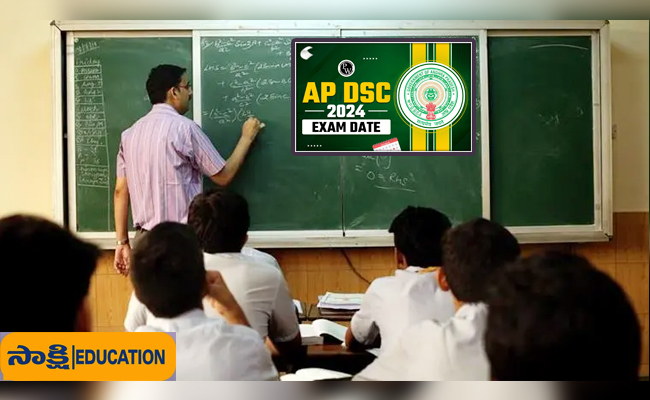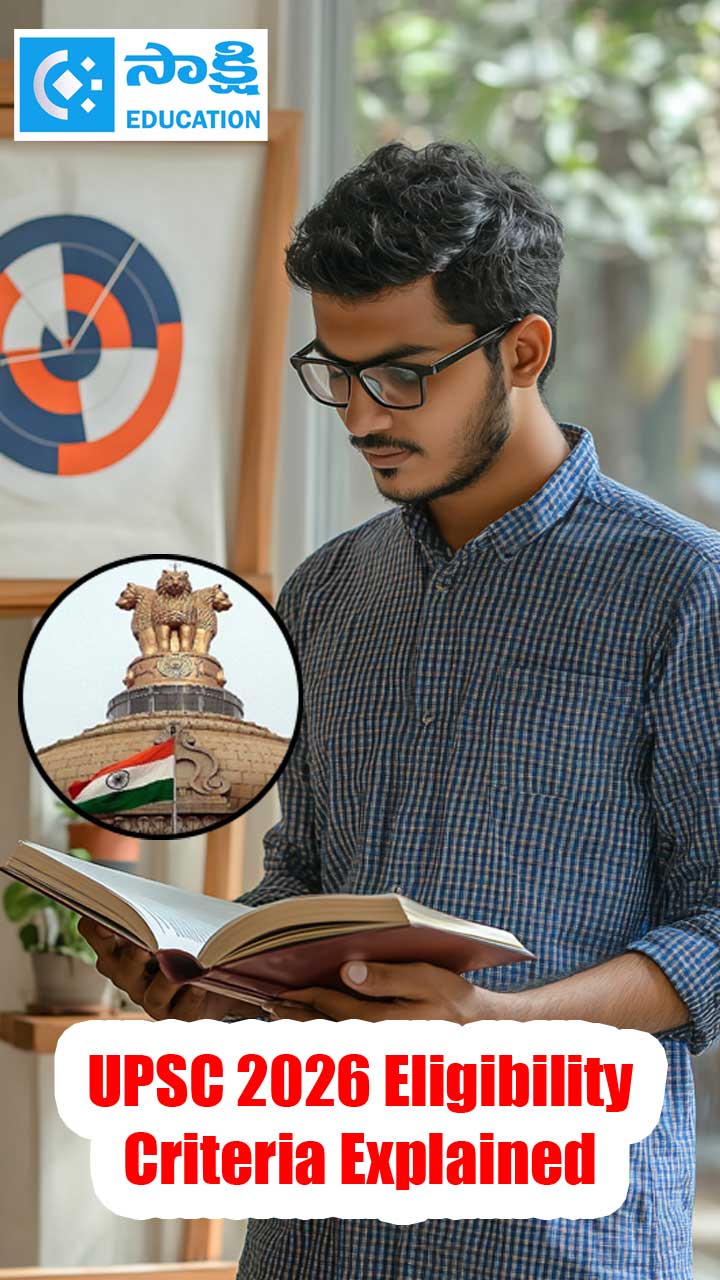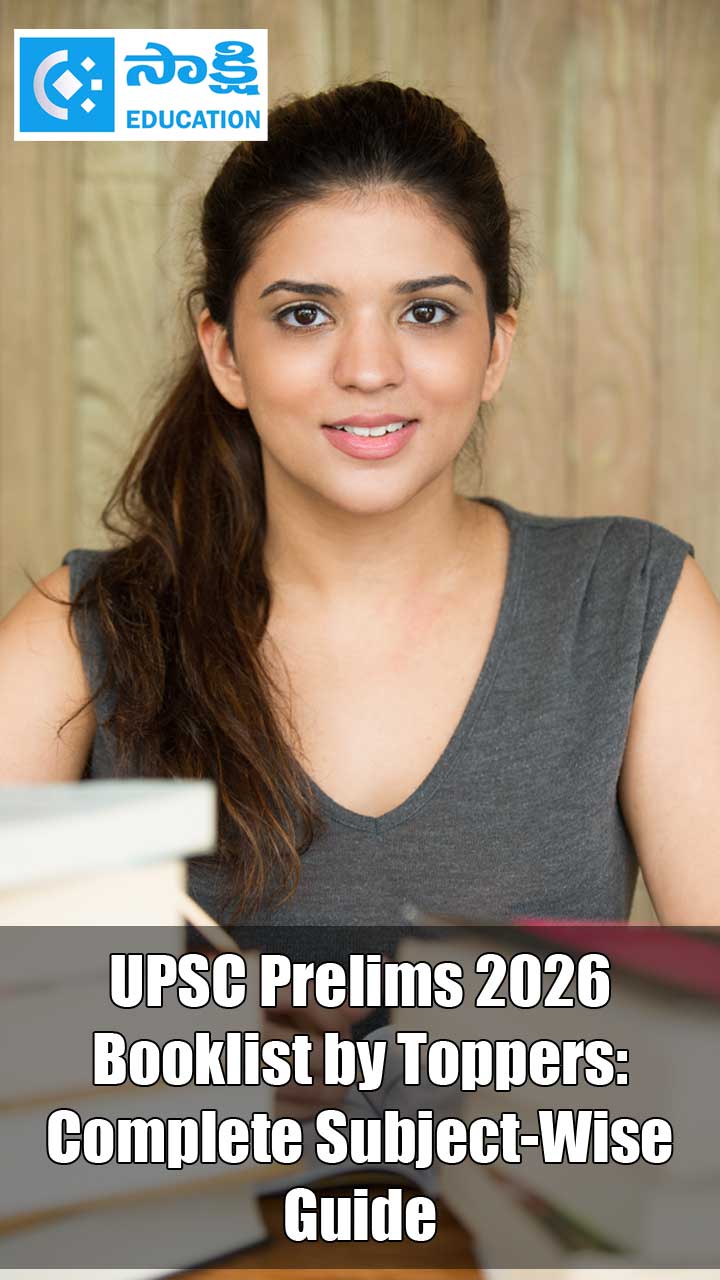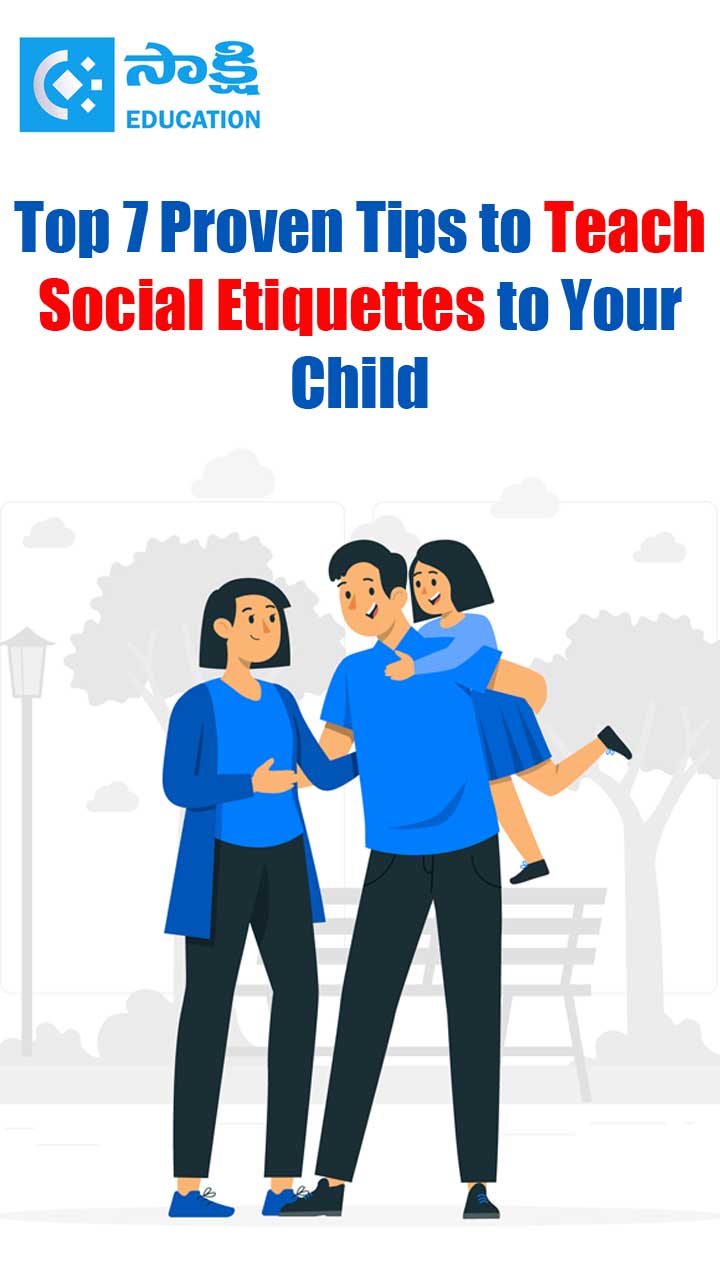AP DSC 2024 SGT Syllabus: Check Question Bank

AP DSC Secondary Grade Teacher Exam Pattern
- G.K & Current Affairs- – 08M
- Perspectives in Education – 04M
- Educational Psychology – 08M
- Content & Methodologies – 60M(40+20)
- Total – 80 M
AP DSC Secondary Grade Teacher Syllabus
PART-I
I. General Knowledge And Current Affairs (Marks: 08)
PART-II
II. Perspectives In Education (Marks:04)
1. History of Education:
• The Education in Ancient India - Pre-Vedic and Post-Vedic period, Medieval Education.
• Education in Pre-Independent era - Woods Despatch (1854), Hunter Commission (1882), Hartog Committee (1929), Sargent Committee (1944).
• Education in Post Independent era - Mudaliar Commission (1952-53), Kothari Commission (1964-66), Ishwarbhai Patel committee (1977), NPE-1986, POA- 1992
2. Teacher Empowerment:
• Need, interventions for empowerment, Professional code of conduct for teachers, Teacher motivation, Professional development of Teachers and Teacher organizations, National / State Level Organizations for Teacher Education, Maintenance of Records and Registers in Schools.
3. Educational Concerns in Contemporary India:
• Democracy and Education, Equality, Equity, Quality in Education, Equality of Educational opportunities.
• Economics of Education, Education as Human Capital, Education and Human Resource Development, Literacy - Saakshar Bharat Mission.
• Population Education, Gender-Equality, Equity and Empowerment of Women, Urbanization and migration, Life skills.
• Adolescence Education
• Value Education–Morel Value and Professional Ethics in Education.
• Health and Physical Education
• Inclusive Education-Classroom Management in Inclusive Education
• Role of Education in view of Liberalization, Privatization and Globalization
• Programmes and Projects– APPEP, DPEP, Sarva Siksha Abhiyan, National Programme for Education of Girls at Elementary Level (NPEGEL), Rashtriya
Madhyamika Siksha Abhiyan(RMSA), Rashtriya Aveshekar Abhiyan(RAA), KGBVs, Model Schools.
• Incentives and special provisions – Mid Day Meals, Free Books, Scholarship, Awards, Welfare Hostels, Transportation.
• Current Trends in Education–Badipelusthondi, Badiki Vasta, Mavuru– Mana Badi, Vidyanjali, Swacha Patasala, Inspire, Kalavutsav.
4. Acts /Rights:
• Right of Children to Free and Compulsory Education Act-2009
• Right to Information Act-2005
• Child Rights
• Human Rights.
5. National Curriculum- Framework,2005: Perspective, Guiding Principles, Learning and Knowledge, Teaching Learning Process, Assessment, Systemic Reforms.
6. National Educational Policy - 2020
PART -III
III. Educational Psychology–8Marks
1. Development of Child: Development, Growth & Maturation – Concept & Nature. Principles of development and their education implication. Factors influencing Development – Biological, Psychological, Sociological, emotional. Dimensions of Development and their interrelationship – Physical & Motor, Cognitive, Emotional, Social, Moral, Language relating to Infancy, early Childhood, late Child hood, Adolescence. Understanding Development– Piaget, Kohlberg, Chomsky, Carl Rogers, Erikson.
2. Individual differences: Inter and intra individual differences, meaning, nature and theories of intelligence with special emphasis to multiple intelligence, IQ, assessment of intelligence, EQ, Creativity. Attitude, Aptitude, Interest, Habit and its Influence on Intelligence – Class room implementation.
3. Learning: Theories and approaches of learning, learning curves, Factors, Phases, Dimensions of learning, Types of learning, Transfer of learning. Memory, Forgetting, Learning and assessment– Class room implementation – Children with special need – Inclusive Education.
4. Personality: Nature, characteristics and theories of personality, factors of Personality, Assessment of Personality, Mental health, Adjustment, Stress – nature, Symptoms and management. Emotional intelligence, Management of emotions – Class room implementation.
PART - IV
Telugu: - Content (Class III to VIII - Difficulty level up to Class X): 8మార్కులు
1) తెలుగు వాచకాలలో పాఠ్యభాగ విషయాలు
A) కవి పరిచయాలు
B) పాత్రలు
C) ఇతి వృత్తాలు
D) సందర్భాలు
E) నేపధ్యాలు
F) విద్యా ప్రమాణాలు
2) పదజాలం:-
A) అర్ధాలు
B) పర్యాయపదాలు
C) నానార్థాలు
D) వ్యుత్పత్త్యర్థాలు
E) జాతీయాలు
F) సామెతలు - వివరణ, గుర్తించడం.
G) పొడుపు కథలు
3) భాషాంశాలు:
A) విభక్తి ప్రత్యయాలు
B) ఔపవిభక్తికాలు
C) పారిభాషిక పదాలు - (ద్రుత ప్రకృతికాలు, కళలు, ఆమ్రేడితం, సంధి, వచనాలు, కాలాలు,లింగాలు,
D) సంధులు సమాసం, ఆగమం, ఆదేశం, బహుళం) తెలుగు సంధులు- (అత్వ, ఇత్వ, ఉత్వ, యడాగమ, సరళాదేశ, ఆమ్రేడిత, ద్విరుక్తటకార, గసడదవాదేశ సంధులు.)
సంస్కృత సంధులు- (సవర్ణదీర్ఘ, గుణ, యణాదేశ, వృద్ధి సంధులు.)
E) సమాసాలు - (ద్వంద్వ, ద్విగు, తత్పురుష సమాసాలు)
F) ఛందస్సు - గణవిభజన, గణాల గుర్తింపు
G) అలంకారాలు
వృత్యనుప్రాస, ఛేకానుప్రాస, అంత్యానుప్రాస (శబ్దాలంకారాలు) ఉపమా, ఉత్ప్రేక్ష, అతిశయోక్తి (అర్థాలంకారాలు). అలంకారాలు గుర్తించుట, లక్ష్య లక్షణ సమన్వయం చేయుట.
H) వాక్యాలు (ఆశ్చర్యార్ధక, విద్యర్థక, నిషేధార్థక, అనుమత్యర్థక, సామర్థ్యార్థక, సందేహార్ధక, ఆశీరర్ధక, ప్రార్ధనార్ధక, ప్రశ్నార్ధక, హేత్వర్ధక, కర్తరి, కర్మణి వాక్యాలు)
తెలుగు బోధనా పద్దతులు: 04 మార్కులు
ప్రాథమికస్థాయిలో భాషాభివృద్ధి మరియు అవగాహన
1) తెలుగు భాషా బోధన, ఉద్దేశాలు, విలువలు, లక్ష్యాలు, స్పష్టీకరణలు.
2) భాష - సమాజం - సాహిత్య ప్రక్రియలు
3) మాతృభాష స్వభావం, నిర్మాణం, ప్రాధాన్యత, భాషోత్పత్తివాదాలు, ధ్వని, అర్థ విపరిణామాలు
4) పాఠ్యపుస్తకాలు - బోధన శాస్త్రంపై అవగాహన
5) భాషా సామర్థ్యాలు విద్యా ప్రమాణాలు
6) బోధనా పద్ధతులు - బోధనాభ్యసన ప్రక్రియల నిర్వహణ
7) ప్రణాళికా రచన
8) బోధనాభ్యసన సామాగ్రి
9) ఆంధ్రప్రదేశ్లో భాషాభివృద్ధి కార్యక్రమాలు
10) భాష - మూల్యాంకనం
PART-V
Language–II English (Marks:8)(Class III To VIII – Difficulty level upto ClassX):
1. Poets, Essayists, Novelists, Dramatists and their works
2. Forms of Language - Story, Essay, Letter writing, Editorial, Precis writing, note- making, autobiography and biography
3. Pronunciation-Sounds-Use of dictionary
4. Parts of Speech
5. Tenses
6. Types of Sentences
7. Articles and Prepositions
Methodology-English (Marks:04)
1. Aspects of English:- (a) English language - History, Nature, Importance, Principles of English as Second Language (b) Problems of Teaching / Learning English.
2. Objectives of Teaching English.
3. Development of Language skills:- (a)Listening, Speaking, Reading & Writing (LSRW) (b) Communicative skills.
5. Approaches, Methods, Techniques of teaching English: Introduction, Definition and Types of Approaches, Methods and Techniques of Teaching English, Remedial Teaching.
6. Teaching of Structures and Vocabulary items.
7. Teaching Learning Materials in English
8. Lesson Planning
9. Curriculum & Text books
10. Evaluation in English language
PART-VI
Mathematics Content (8Marks) (Class III To VIII–Difficulty level upto ClassX):
I. Numbers:
Numbers - Four fundamental operations (Addition, Subtraction, Multiplication, Division) - Knowing about Numbers - Hindu-Arabic system of numeration (Indian system of numeration)
- International system of numeration (British system of numeration) - Place value and Face values of a digit in a number - Comparing and Ordering of Numbers - Whole Numbers -Factors and Multiples - Prime and Composite numbers - Even and Odd numbers - Tests for Divisibility of Numbers - Common Factors and Common Multiples - Prime factorisation - Highest Common Factor (G.C.D) - Lowest Common Multiple - Integers - properties and fundamental operations - Fractions and decimals - Types of fractions - comparison - Applications of fractions in daily life - four fundamental operations on fractions and decimals
- Rational Numbers - Properties of Rational Numbers - Rational Numbers between two rational numbers-Four fundamental Operations on Rational Numbers-Product of reciprocals
- Squares - Square roots (Numbers and Decimals) - Properties of Square Numbers -Cubes - Cube roots of Numbers - Playing with Numbers - Games with Numbers - Letters for Digits.
II. Arithmetic:
BODMAS rule - Ratios and Proportions (Direct, Inverse) - comparing quantities using ratios, proportion, percentage and their applications - Profit and Loss - Discount - Sales Tax/Value Added Tax/Goods and Services Tax - Simple, Compound Interest and their applications.
III. Geometry:
Basic geometrical concepts (Point, Line, Line segment, Ray, Curves, Polygons, Angles) - Measuring of Lines - Pairs of Lines - Elements of Angles - Measuring of Angles - Types of Angles - Naming of the given 2D figures of Triangles, Square and Rectangle - The Triangle - Types of Triangles andits Properties -Classification of Polygons -Angle sum property - Kinds of Quadrilaterals (Trapezium, Kite, Parallelogram) - Some special parallelograms (Rhombus, Rectangle, Square) - Constructing different types of Quadrilaterals - Views of 3D- Shapes - Identification of Edges, Vertices and Faces of 3D figures (Euler’s Rule) - Nets for building 3D shapes.
IV. Data Handling:
Reading and interpreting and analysing the Data (pictograph, tally marks, bar graphs, double bar graph, pie charts) - Arithmetic Mean - Mode - Median of un-grouped data - Chance and Probability.
V. Algebra:
Patterns - making rules - The idea of variables - formation of algebraic expressions -Terms, Factors and Coefficients - Linear equations in one variable - terms and types of algebraic expressions - finding the value of an expression - Addition, Subtraction and Multiplication of Algebraic Expressions - Multiplying a Monomial by a Monomial and polynomial - Multiplying a Polynomial by a Polynomial - Standard Identities and their applications - Applications of simple equations to practical situations - Exponents and Powers - Negative exponents-Laws of exponents-Expressing large numbers in the standard form- Factorisation - Division of Algebraic Expressions Continued (Polynomial Polynomial) - Linear Graphs.
VI. Mensuration:
Measuring Length, Weight, Capacity, Time-Seasons, Calendar, Money, Area - Symmetry(Line and Rotational) - Perimeter of Triangle, Square, Rectangle, Rhombus, Trapezium, Parallelogram, Circle and Polygon), Area of a Quadrilateral, Surface Area and Volume of Cube, Cuboid and Cylinder -Volume and capacity.
Mathematics Methodology (04Marks)
1. Nature and Definitions of Mathematics
2. Aims, values and instructional objectives of teaching Mathematics
3. Methods of Teaching & Remedial measures in Mathematics
4. Instructional Material, TLM and Resource Utilization in Mathematics
5. Curriculum, Text Book & Instructional Planning.
6. Evaluation and Continuous Comprehensive Evaluation
PART-VII
Science Content (Marks: 08) (Class III To VIII– Difficulty level upto Class X):
1. Living World:
Living and non-living things – Characteristics of living organisms
Plants -Types of plants- Herb, shrub, Tree, basing on habitat – Terrestrial, Aquatic, Desert etc, plant parts -functions
Animals – Animals around us – Oviparous, viviparous; herbivore, carnivore, omnivore; shelters of different animals, Birds – beaks, Domestic animals, Wild animals, Types of animals basing on habitat, herbivore, carnivore, omnivore, Animals sounds, Movements in animals, Different types of habitat and adaptation, Homes of animals, Nests of birds.
Human beings - Body parts, Healthy body – good habits, Sense organs and their care, concern for differently abled persons, Good touch and Bad touch, Skeletal parts – Bones, Joints, Cartilage; muscles, Safety measures – at home, school safety, Road safety, water hazards, First- aid.
Food - Food, Need of food, Sources of food – plants, animals, Types of food, Cooked and rawfoods,Utensils,Mid-daymeal,Methodsofpreparingfood,Foodwastage, Preservation of food, Good food habits, Our food, Components of food, Balanced diet, Junk food, Deficiency diseases
Agricultural Practices, Tools used in agriculture, Methods of agriculture, Storage of food, Food from Animals, Food for birds and animals.
Family - Role of family members, Family Tree, Types of family, Changing family structure, Family Budget, Shelter for all, Different types of houses, Home appliances, Migration – Reasons, Effects, Slums, Homeless people.
Cell –The basic unit of life, Types of cells, Cell structure and function.
Microorganisms - Introduction to microorganisms – types, Useful Microorganisms, Harmful microorganism.
Games and recreation-indoor, outdoor, local games, uses, materials used and the rules.
2. Life processes:
Nutrition-Nutrition in plants–Autotrophic, Parasitic, saprophytic, Insectivorous, Different ways of taking food, Digestion in humans, Digestion in grass eating animals, feeding and digestion in amoeba.
Respiration –Types of respiration, Respiration in animals, Respiration in plants,
Circulation- Circulatory system in human being- Transport of substances in plants.
Excretion in animals, Coordination-Nervous system,
Reproduction - Modes of reproduction – sexual, asexual and vegetative, Seed dispersal, Sexual and Asexual Reproduction in Animals, Adolescence and puberty– changes, role of hormones, Reproductive phase, Sex determination, Hormones other than sex hormones, Metamorphosis, Reproductive health
3. Natural Phenomena: OBJECTSANDMATERIALS
Objects around us – Properties of materials - classification of materials, Properties and uses of Metals and Non-metals, Reactivity order of metals, Methods of separation– Saturated and unsaturated solutions. Acids, bases and salts, indicators, Neutralization, Physical and chemical changes, Rusting of Iron, Galvanization, Crystallization.
MEASUREMENTOFDISTANCES–MOTION
Measurement of distances, Standard units and non-standard units of measurements, Motion and rest, Types of motion, Motion and time – speed, average speed, Uniform and non-uniform motions, Measurement of time, Time period, Units of time and speed, Measuring speed, Distance-time graph,
LIGHT
Light, shadows, and reflections, Transparent, opaque and translucent objects, pin hole camera, mirrors and reflection, Regular and Diffused Reflection, multiple images, kaleidoscope, periscope, Characteristics of images formed by mirrors, Spherical mirrors and images, Lenses and images, Sunlight – dispersion, Human Eye, Care of the Eyes, Braille System, Visually Impaired Persons
ELECTRICITY
Simple electric circuit and its components, Symbols of electric components, Electric conductors and insulators, Heating effects of electric current, CFL, LED, Fuse and MCB, Magnetic effects of electric current, Electromagnet, Electric bell, Chemical Effects Of Electric Current, Good/Poor Conducting Liquids, Electroplating.
MAGNETISM
Magnets – Discovery of magnets, Magnetic and nonmagnetic substances, Types of magnets, Properties of magnets, Magnetic compass, Storing of magnets.
HEAT
Heat – temperature, measuring temperature, Units of temperature, Types of Thermometers, Transfer of heat – conduction, convection, radiation.
FORCE, FRICTIONANDPRESSURE
Force – push or pull, Exploring forces, net force, Effect of force on objects, Contact and non contact forces, Pressure, Fluid pressure, Atmospheric pressure, Friction, Factors effecting friction, Friction: A necessary evil, Increasing and reducing friction, Types of friction.
COMBUSTION AND FUELS
Exhaustible and inexhaustible resources, Fuels–Types, Coal, Uses of Coal and Coal products, Refining of petroleum, Petrochemical products in various sectors, Various Constituents of Petroleum and their Uses, Formation of coal and petroleum, Natural Gas, Misuse of Energy resources and Consequences. Combustion, Types of Combustion, Ignition temperature, Inflammable substances, Flame, Fuel Efficiency, Burning of Fuels Leads to Harmful Products, Fire control, Structure of flame – colour zones–Intensities.
FIBRES
Natural and Synthetic fibres, Preparation and uses, Types and Characteristics of Synthetic Fibres, Our dress our culture, Kinds of cloths we wear in winter and summer, Plastics as Materials of Choice, Types of plastics, Plastics and environment, Biodegradable – Non biodegradable materials.
SOUND
Sound-a form of energy, Production of sound, Some musical instruments, Propagation of sound, Human ear, Hearing Impairment, Noise and Music, Types of waves (longitudinal and transverse), Characteristics of sound waves (Wavelength, Frequency, Time period, Speed of the wave),Pitch, Loudness and Quality, Audible and Inaudible sounds, Noise pollution.
SOMENATURALPHENOMENA
The Story of Lightning, Chargingby Rubbing, Electric charge and properties of electriccharge,Typesofchargesandtheirinteractions,Transferofcharge,lightning,lightning
safety,lightningconductors,Earthquake,Tsunami,Causesandeffects,Protective
measures.
OUR UNIVERSE
The Moon, The Moon’s Surface, Phases of Moon, Eclipses (Solar and lunar eclipses), The Stars, Movement of Stars(Constellation, polestar), Movement of the Sun, Solar System, Planets and Some Other Members of the Solar System, Artificial Satellites.
4. Transportation and Communication:
Transportation - Story of transport – Objects-signs and signboards used for transport – Places associated with transport–Modes of travel in the present and in the past–Methods
Of transport in different topographical conditions (Transport in hilly areas, Forest, Deserts,
Snowy areas, Rivers & Canals) - Need for an international transport -Import and export of the goods-different means of transport of goods-Importance of tourism and seven wonders of the world.
Communication – Means and objects of Communication-Types of Communication both in Human and Animals (different feelings and gestures) Modern forms of communication – Communicationusedinthepastandpresent-AdvantageofMassCommunication-
Communication through Post card, Cell Phone, E-Mail, News Paper, Radio, TV, and Social Media etc.,
How communication and transport brings the entire world together.
5. Professions and Services:
Climate–Climate change, Weather-Climate-rain-floods-Cyclones-disaster management,
Global environmental issues – Green house effect, Global warming, Acid rains. Eco friendly activities, Say no to plastic.
Air - Presence of air, Components of air, Properties of air, Availability of oxygen to animals and plants, Replacement of oxygen in the atmosphere, uses of air, Nitrogen cycle, Air pollution -causes, effects and prevention.
Water - Forms of water, Uses of water, source, scarcity, protected water, wastage of water, Water resources, Tank pollution, safe drinking water, tank management, journey of rain drop – Water cycle, water magic, water properties, Water resources, major rivers in AP, fisherman, water transport, tragedy of rivers, drought and floods, water pollutions- Causes,effectsandprevention.Sewage,Treatmentofpollutedwater,Betterhouse keeping practices, Sanitation and Disease, Alternative arrangement for sewage disposal.
Biodiversity -Forests, Flora, fauna, interrelation of organisms, Green world, Advantages of forests, Deforestation - effects, Chipko movement, Conservation of forest and wildlife – Protecting areas, endangered and endemic species.
Methodology: (04 Marks)
1. Nature, Scope, History and development of science.
2. Aims, Values, Objectives specifications of teaching Science, Academic Standards.
3. Methods, approaches and techniques of teaching science.
4. Teaching learning material, Improvised teaching aids.
5. Science curriculum, Text–book.
6. Assessment and Evaluation
7. Science laboratories.
8. Planning in science teaching(Year Plan, Lesson Plan)
9. Role of Science Teacher
10. Science Fairs, Science clubs, Field– trips, Science museums.
PART -VIII
Social Studies Content - 8Marks (Class III To VIII – Difficulty level up to Class X ):
Theme - I: Our Universe
The shape of the Earth, The Universe- Origin, solar System, Our Earth in the Solar System– Celestial bodies, Constellations, Realms of the Earth-Latitudes and Longitudes -Movements of Earth – Solar System- Globe-Model of Earth – Axis of Earth, Equinox – Eclipses.
Maps – Directions, Scale, Symbols, Patterns, Types, Where are we-Village, Mandal, District, country maps.
The Earth- Environment – Components, Interior of the Earth, Atmosphere, Biosphere, Pollution, Disasters.
Land Forms –Major Land Forms in AP, Podu cultivation, Diversity in Lifestyles.
Forests-Climatic Regions- Types of Forests, Forests in AP, Uses-Deforestation, Conservation of Forests.
Land, Soil, Water, Natural Vegetation and Wildlife Resources.
Theme-II: Production Exchange and Livelihoods
Migration of people-Reasons for migration, effects of migration, Slums, Family Budget, Profession and services- Farmer, Tailor.
Resources–Types, Conservation, Mineral and Power Resources– Types of Minerals, Distribution, Conservation Power Resources: Conventional, Non-Conventional.
Human Resources-Distribution of Population, Density of Population, Population Change, population composition.
Agriculture–Types of farming, Major crops; industries-Classification and Distribution.
Weavers, Iron Smelters, factory owners, Indian Textile and the world market-The sword of Tipu Sultan and Wootz steel, Public facilities, Water as a part of fundamental Right to Life- Govt. Role. Markets Around Us-Types of Markets-Consumer Protection.
Transport system, International Transport, Exports and Imports, Global Village, Road ways, My bicycle, Vehicles other than Transport, Transport in Hill areas, Forests, deserts, snowy areas, rivers and canals, Road Safety, Traffic symbols, Road safety measures, pedestrian safety, safe cycling, safety travelling.
Theme-III: Political Systems and Governance
Early Life to Settled life- Early people, Nomadic life, Belum caves, Rock paintings, Growing plants, Rearing animals, Towards a settled life, Emergence of Kingdoms and Republics, Mahajanapadas, Magadha, Vaggi Kingdoms and Empires- Mauryan, Guptas, Satavahanas, Pallava, Chalukya Dynasties.
Delhi Sultanate, Kakatiyas, Vijayanagara Empire, Mughals, Contemporary Kingdoms.
Governments – Types, Monarchy, Democracy, Different levels, Local and Self Government, State and Central Governments; Why do we need a Parliament?, The role of the Parliament, Who are the people in the parliament?; State Government – Legislature, Executive, Judiciary- Role, Independent Judiciary, Structure of Courts in India, Different Branches of the legal system-Understanding our Criminal Justice System–the role of police and Public Prosecutor, Judge, Fair Trail- Law and Social Justice – Bhopal gas Tragedy, Enforcement of Safety Laws, New laws to protect the Environment.
The Indian Constitution, key features – Fundamental Rights – Fundamental Duties; Understanding Secularism, Understanding Laws.
- Civilizing the “Native” Educating the nation- How the British saw Education? – What happened to the local schools?- the agenda for a National Education, How Important are Dates, How do we periodise, What is Colonial?,- From Trade to Territory-The Company establishes Power, East India Company, Battle of Plassey, Tippu Sultan, The Doctrine of Lapse, Setting up a new administration–Ruling the country side–Diwani system, Munro system, Demand for Indian Indigo, The Blue Rebellion and after – Tribals, Dikus and the vision of Golden age-How did Tribal groups live?, How did colonial rule effect Tribal lives?, Forest Laws and their impact- Birsa Munda.
Indian Freedom struggle, When people Rebel 1857 and after-Policies and the people, Through the Eyes of the people, A Mutiny becomes a popular Rebellion, the company fights back, The making of the National Movement:1870’s to1947-The emergence of nationalism, The growth of mass nationalism, The March to Dandi, Quit India and Later –India after Independence- A new and divided nation, A Constitution is written, How were states to be formed – Planning for development, A Nation sixty years on
Theme-IV: Social Organization and Inequities
Inequality, Steps towards equality – Constitutional provisions, Remedial measures for abolishing inequality, Will Discrimination and inequalities stop people from achieving their goal.
Women Change the World, Women’s movement, Inspirational Women- Women, Caste and Reforms- Working towards change: Changing the lives of Widows, Girls begin going to School, Women write about women, Caste and social reform: Gulamgiri who could enter, The Non-Brahman Movement.
Understanding Marginalization – Adivasis and Development, Minorities and Marginalisation- Confronting Marginalisation- Invoking Fundamental Rights-Laws for the Marginalised, Protecting the rights of the Dalits and Adivasis, Adivasis Demands and the 1989 Act.
Theme-V: Religion and Society
Religions–Hinduism,Jainism,Buddhism,IslamandSikhism,UnityinDiversity;Bhakthi and Sufi Movements
Theme-VI: Culture and Communication
Together with everyone–communication, Postalservices, mobiles, E-mail, Mass communication, Newspaper, Radio, TV, Social Media.
Let us Visit-Historical and Tourist places in AP; Early Civilisations- Indus Valley civilisation, vedic period, vedic literature; Indian Culture, Languages.
Methodology: (04Marks)
1. Nature, Scope, History and development of Social.
2. Aims, Values, Objectives specifications of teaching Social, Academic Standards.
3. Methods, approaches and techniques of teaching Social.
4. Teaching learning material, Improvised teaching aids.
5. Social curriculum, Text–book.
6. Assessment and Evaluation
7. Social laboratories.
8. Planning in Social teaching(YearPlan,LessonPlan)
9. Social Teacher roles and responsibilities.
10. Fairs, Clubs, Field–trips, museums















